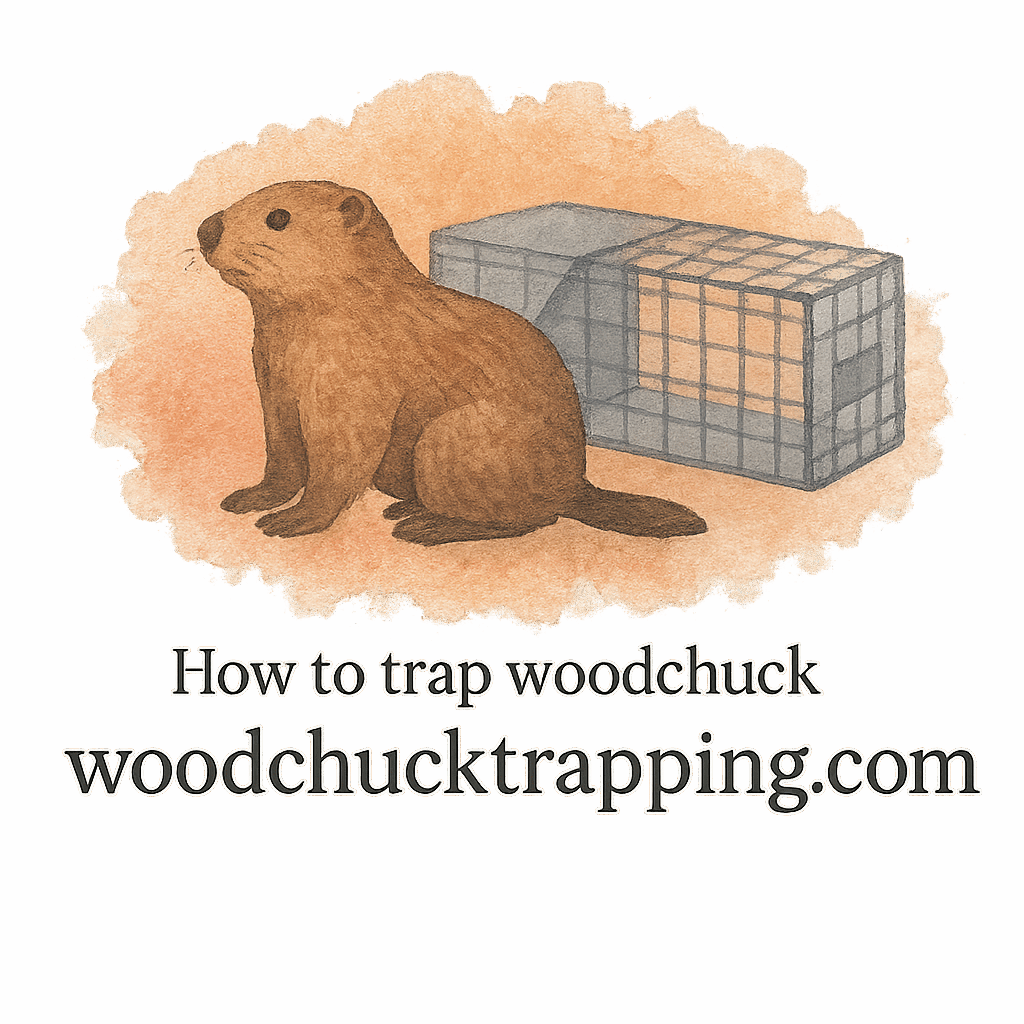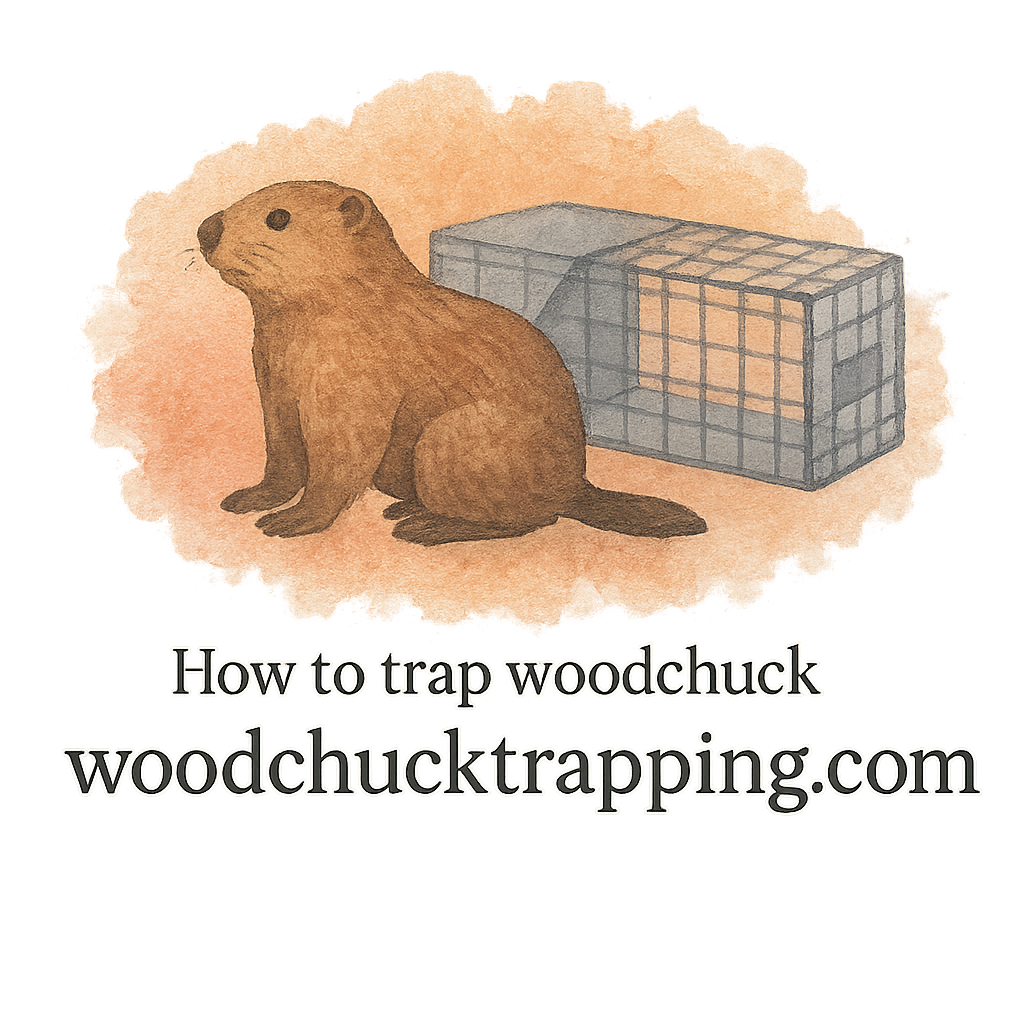Introduction
If your beautiful garden keeps turning into a buffet for unwanted critters, you might be dealing with woodchucks. These furry diggers, also called groundhogs, can cause serious damage in a short time. But don’t worry—you can fix most of these problems with smart woodchuck trapping techniques. In this article, we’ll explore 12 common garden damages caused by woodchucks and explain how proper trapping methods can protect your yard for good.
Understanding the Woodchuck Problem
What is a Woodchuck?
A woodchuck, also known as a groundhog, is a burrowing rodent that loves leafy greens, fruits, and tender plants. While they may look cute, their appetite and digging habits make them a nightmare for gardeners. Learn more about woodchucks and their behavior.
Why Woodchucks Target Gardens
Your garden is like a five-star buffet for woodchucks—fresh veggies, sweet fruits, and soft soil perfect for digging burrows. Once they find your yard, they’ll keep coming back until stopped.
Signs of Woodchuck Infestation
You might notice gnawed plants, dug-up soil, and hidden burrow entrances. These are telltale signs of an infestation that it’s time to act fast before the damage gets worse.
12 Common Garden Damages Caused by Woodchucks
1. Destroyed Vegetable Beds
Woodchucks love munching on lettuce, beans, and cucumbers, often wiping out an entire bed in one night.
2. Chewed Fruits and Herbs
From strawberries to basil, woodchucks chew indiscriminately, leaving behind half-eaten crops.
3. Collapsed Burrows Under Plants
Their tunnels weaken root systems, causing plants to droop or die. Explore burrow issues in detail at woodchuck burrows.
4. Lawn Damage from Digging
Holes and dirt mounds ruin smooth lawns, making mowing difficult.
5. Weakening of Garden Fences
Woodchucks push under or gnaw at barriers, creating entry points for themselves.
6. Damage to Ornamental Plants
Even decorative flowers aren’t safe—marigolds, sunflowers, and tulips often end up chewed.
7. Soil Erosion from Burrowing
Large tunnel networks contribute to soil instability and erosion problems.
8. Compacted Roots in Small Yards
In small yard gardens, compacted roots from tunnels restrict plant growth.
9. Chewed Irrigation Lines
Plastic drip systems and hoses become chew toys, wasting water and money.
10. Unsafe Holes for Pets and Children
Burrow entrances pose tripping hazards for kids and pets. See more on yard damage risks.
11. Structural Damage Near Sheds
Burrows dug near sheds or patios weaken foundations over time.
12. General Yard Damage
From uprooted plants to random tunnels, the overall yard appearance suffers greatly.

How Woodchuck Trapping Techniques Fix These Problems
Choosing the Right Trap
Not all traps are created equal. Picking the right one is the first step in solving your garden problem.
Compact Traps for Minimal Space
In minimal space gardens, compact traps are ideal. They’re easy to set up and effective without taking over your yard.
Humane and Safe Trapping Options
Modern traps prioritize safety. You can check humane options here.
Using Proper Baiting and Luring Methods
The right bait makes all the difference. Learn about baiting and luring techniques to boost success rates.
Effective Scent Baits and Lures
Fresh produce like apples works well, but specially designed scent baits attract them faster.
Placement for Maximum Success
Placing traps near burrows or along active trails ensures you catch them before more damage occurs.
Essential Trapping Gear and Tools
Don’t forget the right gear. Explore full equipment reviews.
Gloves for Safety and Handling
Always wear gloves to avoid transferring human scent or risking bites.
Trap Gear That Lasts
Durable trap gear ensures long-term effectiveness season after season.
Step-by-Step Guide to Woodchuck Trapping
Preparation and Site Inspection
First, inspect your garden to identify active tunnels, entry points, and food sources.
Setting the Trap Correctly
Follow how-to-trap guidelines for placement and bait setup.
Handling a Trapped Animal
Once caught, careful handling is key to avoid injury for both you and the animal.
Following Local Laws and Safety Rules
Before trapping, check laws and safety regulations to ensure compliance.
Preventing Future Garden Damage
Yard Maintenance Strategies
After removing woodchucks, fill in burrows and maintain fences. Discover prevention methods to keep your garden secure.
Exclusion and Deterrent Techniques
Use fencing, repellents, and regular inspections to reduce future risks. Check more trapping techniques and prevention tips.
Conclusion
Woodchucks may seem harmless at first glance, but the destruction they cause in gardens is no small matter. With the right traps, baits, and techniques, you can fix the damage and protect your hard work. Remember, success lies in preparation, using the right gear, and following safety guidelines. Once you’ve tackled the current infestation, focus on prevention so your garden stays lush and woodchuck-free.
FAQs
1. What is the best bait for woodchuck traps?
Fresh produce like apples, cantaloupe, and special scent baits are highly effective.
2. How can I tell if woodchucks are damaging my yard?
Look for chewed plants, burrow holes, and other infestation signs.
3. Are woodchuck traps safe for pets?
Yes, especially if you choose humane trapping options and monitor traps regularly.
4. Do I need special tools to trap woodchucks?
Yes, essential trapping tools and gloves make the process safer and more effective.
5. Can I trap woodchucks in a small yard?
Absolutely. Use compact traps designed for minimal spaces.
6. Is woodchuck trapping legal everywhere?
Not always. Check local laws and safety guidelines before trapping.
7. What should I do after trapping a woodchuck?
Follow proper trapped animal handling and relocation steps, or contact professionals if unsure.


